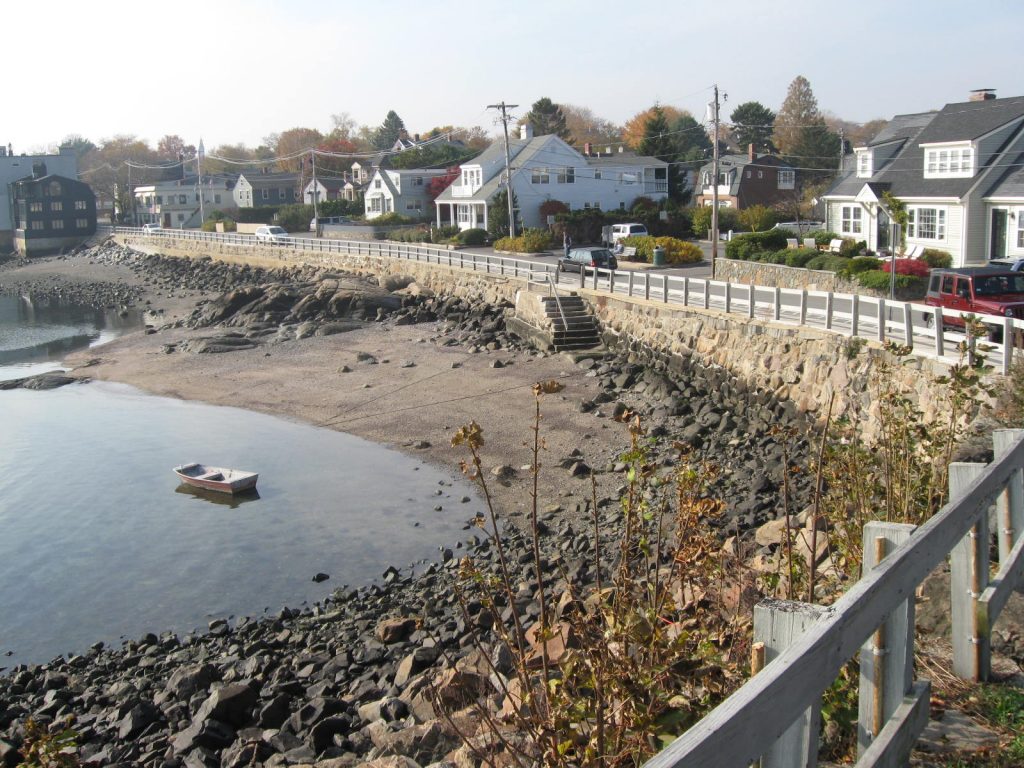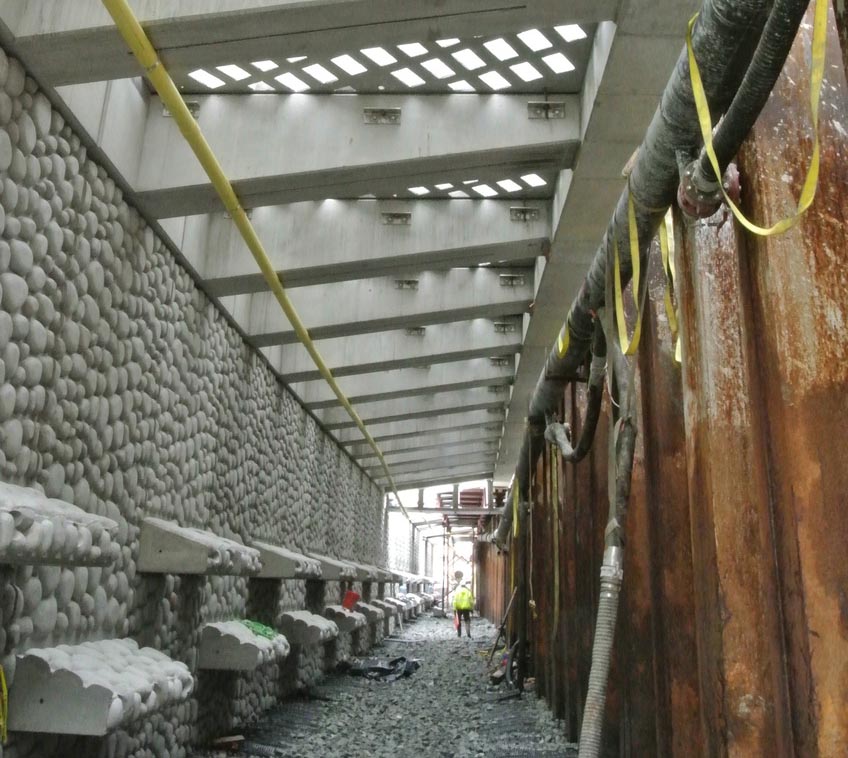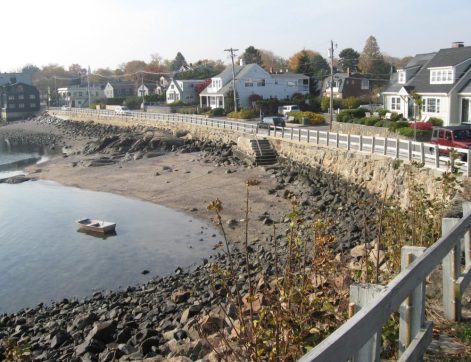
Coastline Along Marblehead, MA
New England’s coastline is home to some of the Nation’s first and largest waterfront communities, with nearly 6,100 miles of tidal shoreline in the region. Unfortunately, the nation’s coastal infrastructure is deteriorating, which greatly impacts these communities. According to the 2017 ASCE Infrastructure Report Card, Ports and Inland Waterways were given a grade of “C+” and “D”, respectively, with a need to modify or replace structures that have far exceeded their design life. The need to rehabilitate or replace these structures is further emphasized as the infrastructure along the coastline continues to age and deteriorate.
As we evaluate and rehabilitate New England’s coastal infrastructure, an ongoing project in Seattle, Washington can provide a template for innovative and sustainable design improvements.
The billion dollar “Waterfront Seattle” project is a total waterfront reconstruction along Elliot Bay that began in 2013 and is scheduled for completion in 2023. Similar to a number of New England’s Ports, The Elliot Bay Seawall was built between 1916 and 1934 and has exceeded its original design life. The original concrete seawall was built on approximately 20,000 timber piles. Deterioration of the structure had led to instability of the seawall and the development of sinkholes behind it. The design and reconstruction of the new Elliott Bay Seawall incorporates several sustainable features, providing ancillary benefits to the area’s infrastructure, tourism, and environment.
The Waterfront Seattle Project replaces more than just the failing seawall; it improves quality of life for both marine life and humans, including a salmon migration corridor and new pedestrian access to the water. The budget for the project includes nearly $350 million for the following:
- Stabilizing the existing soil and foundations with jet-grouted columns.
- Installing precast concrete textured walls for the salmon migration corridor.
- Installing a habitat bench along the wall to increase fish and marine life habitat.
- Installing a sidewalk and pedestrian space with light-penetrating surfaces

Overview of the Textured Wall and Concrete Shelves (currently behind a temporary coffer dam) from https://waterfrontseattle.org/
What makes this engineering project truly unique is the focus on promoting sustainable and natural environmental growth. The new textured concrete walls will create a salmon migratory corridor where one has not existed for over 100 years. Textured shelves cast into the concrete walls allow plant and marine life to adhere to the wall. The walkway above the new corridor consists of glass bricks installed into precast concrete sidewalk panels that are able to support pedestrian traffic and allow sunlight to penetrate the sidewalk, promoting plant and marine growth below the walkway and on the wall. An intertidal bench, located in shallow water, will also be constructed to simulate a nearshore habitat.
Now fish, crustaceans, and plant life that would typically be found in and around the shallow natural shoreline of Elliot Bay can find their way back to an area that was previously inaccessible. Plants that could not grow in the deep waters along the original wall can thrive on the textured shelves and intertidal benches creating aquatic food for the marine life in the bay. Juvenile salmon that would typically avoid the shoreline of the previous wall due to the lack of light will use the new seawall as a migratory corridor.
As we look to rehabilitate our aged coastal infrastructure in New England, the Waterfront Seattle Project is a prime example of how we can sustainably build and rehabilitate an already established waterfront. A thoughtful and innovative approach can update critical infrastructure while simultaneously benefiting businesses, people, and marine life for years to come.
For More Information:



